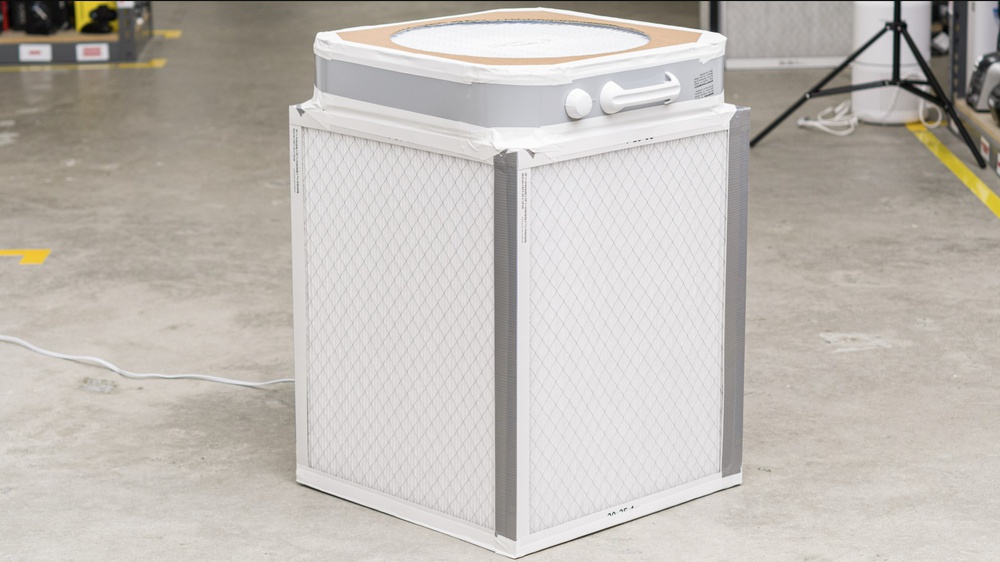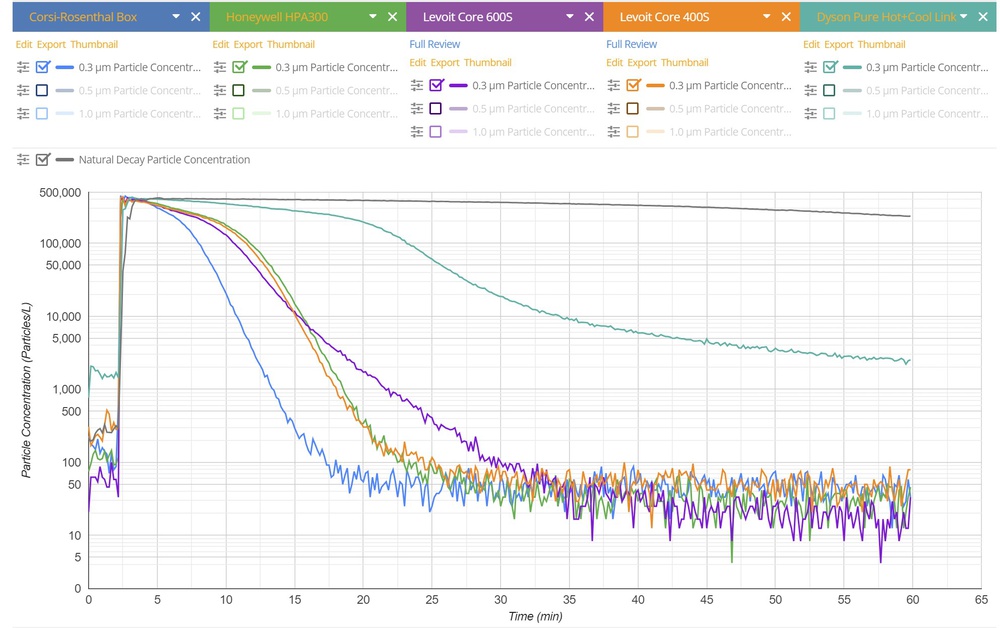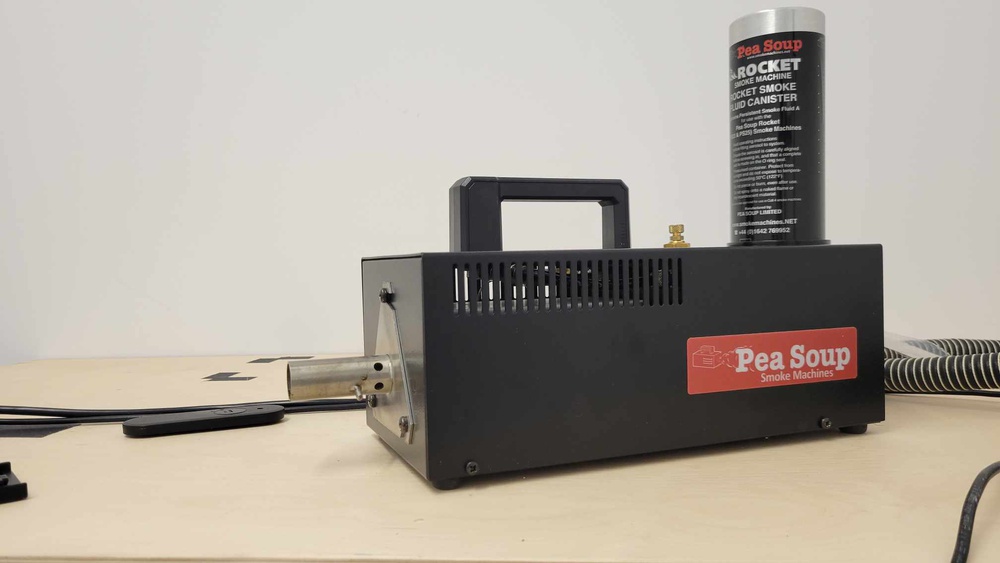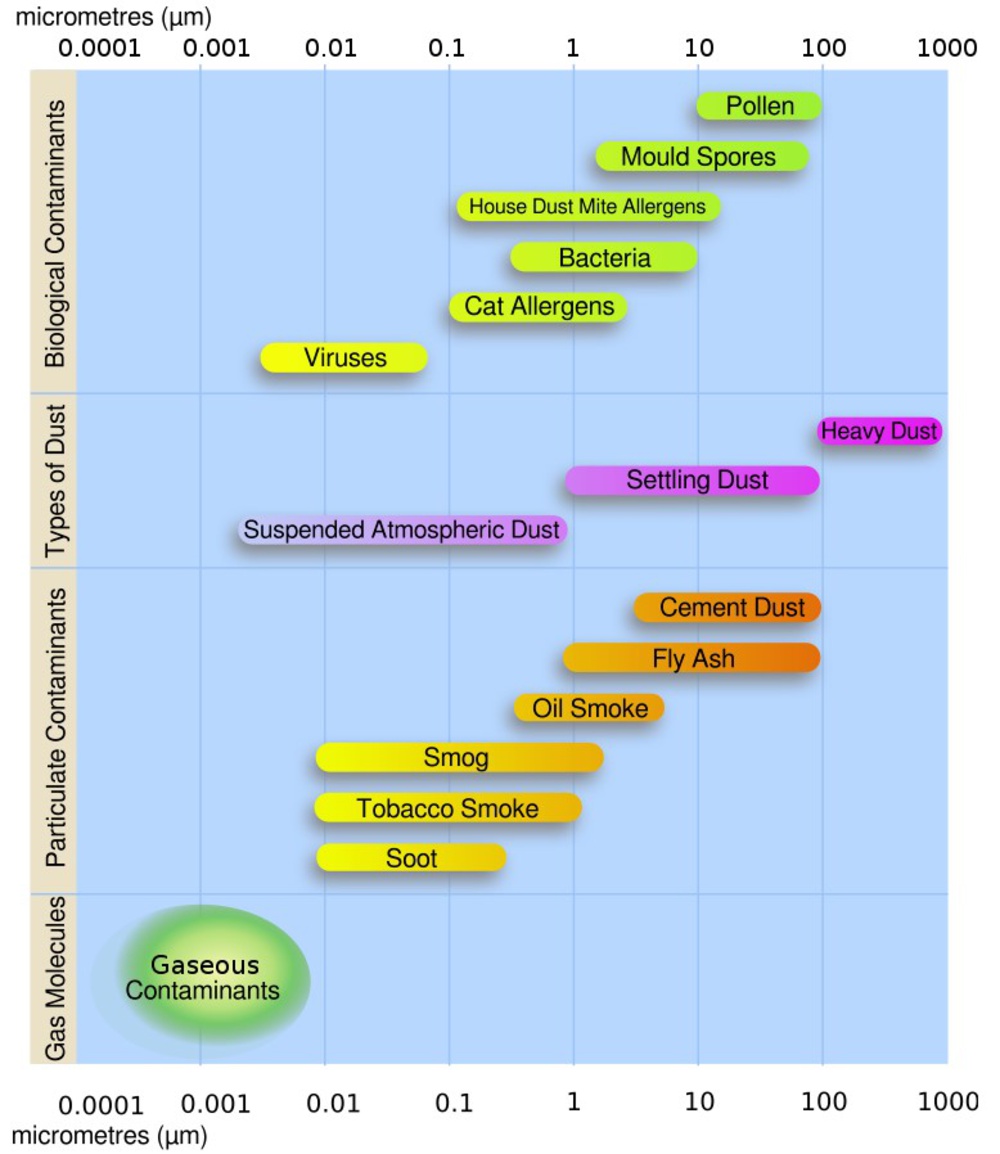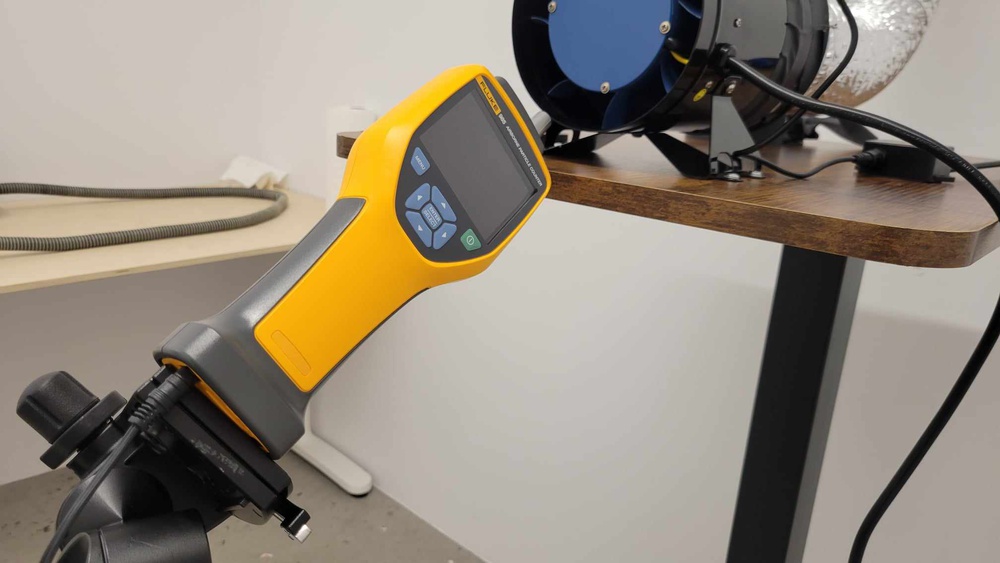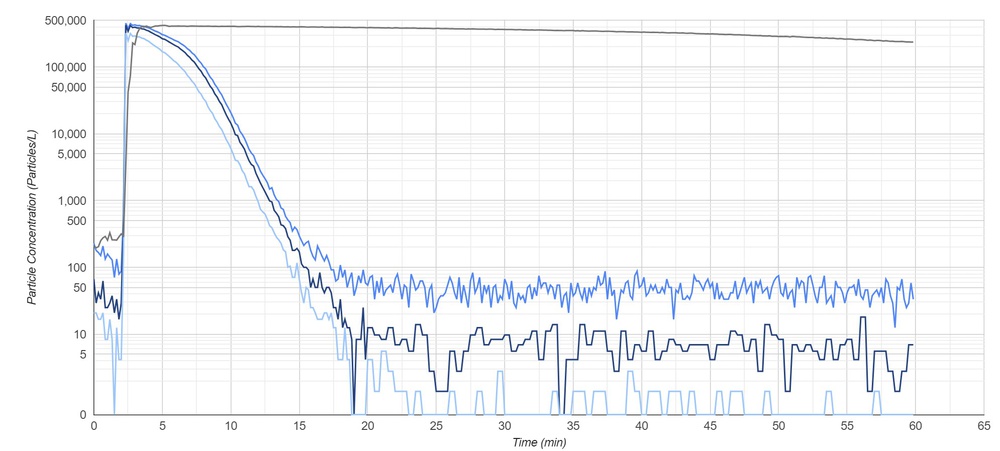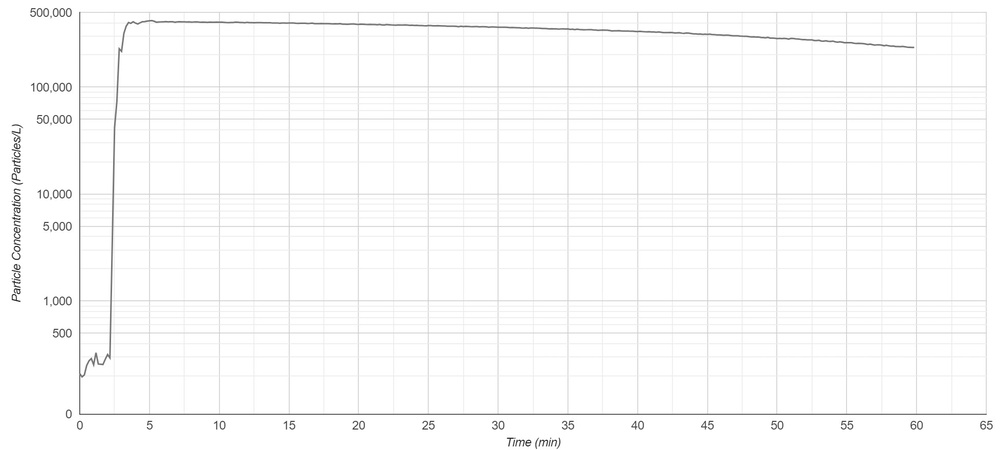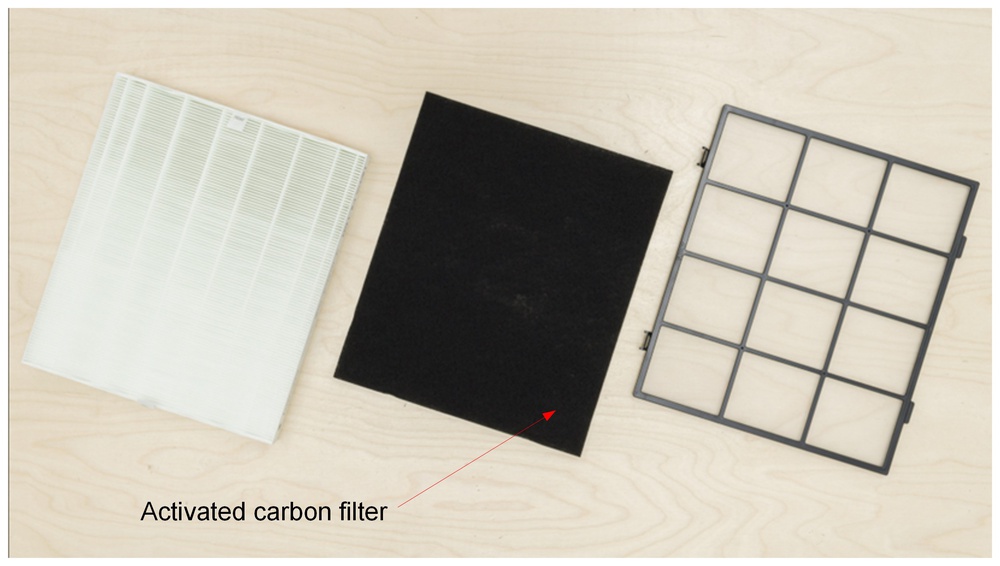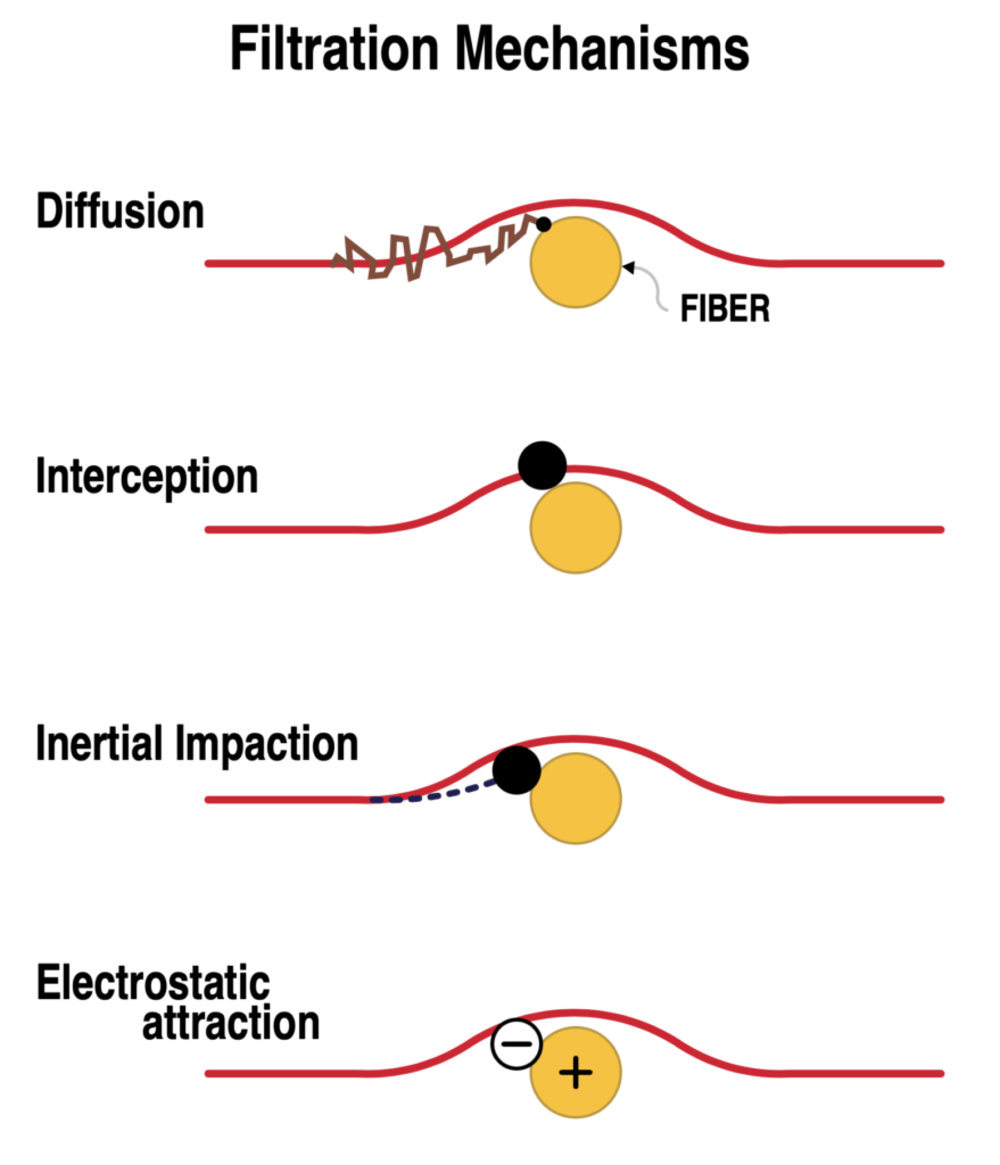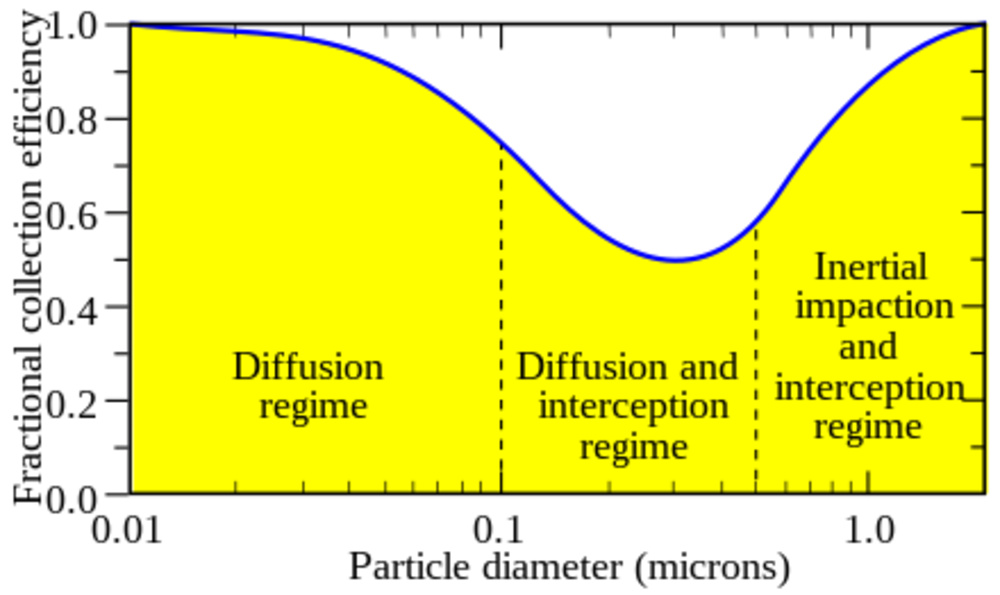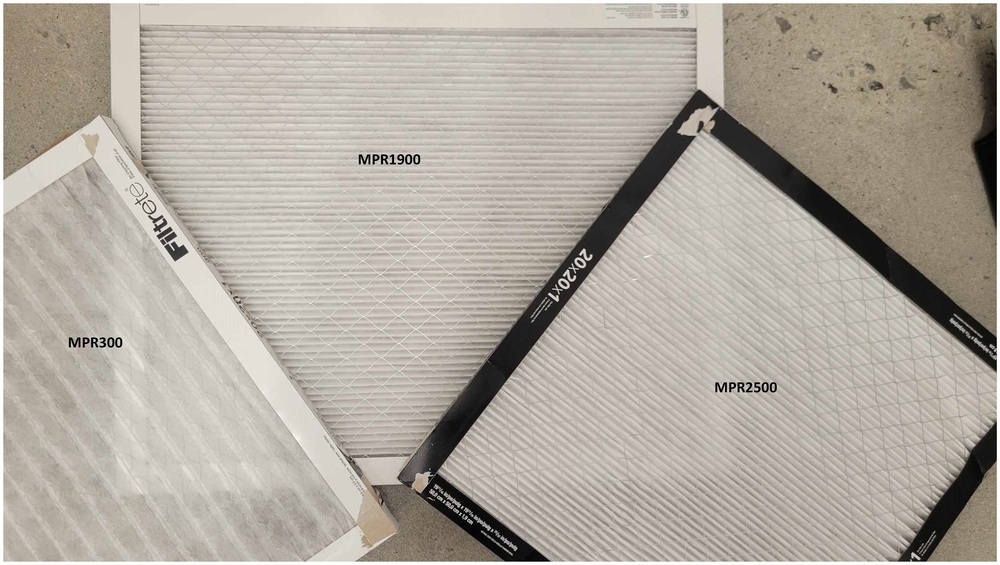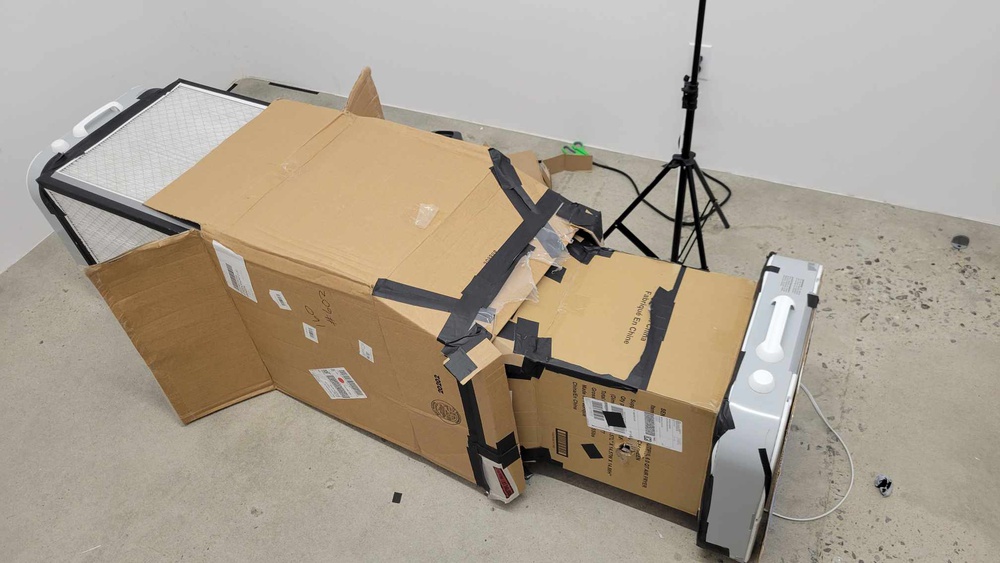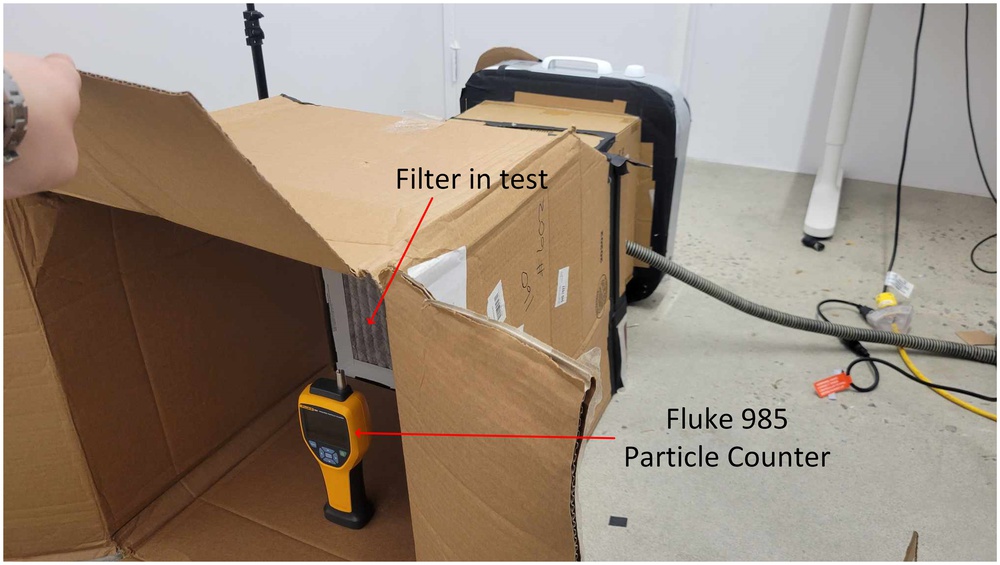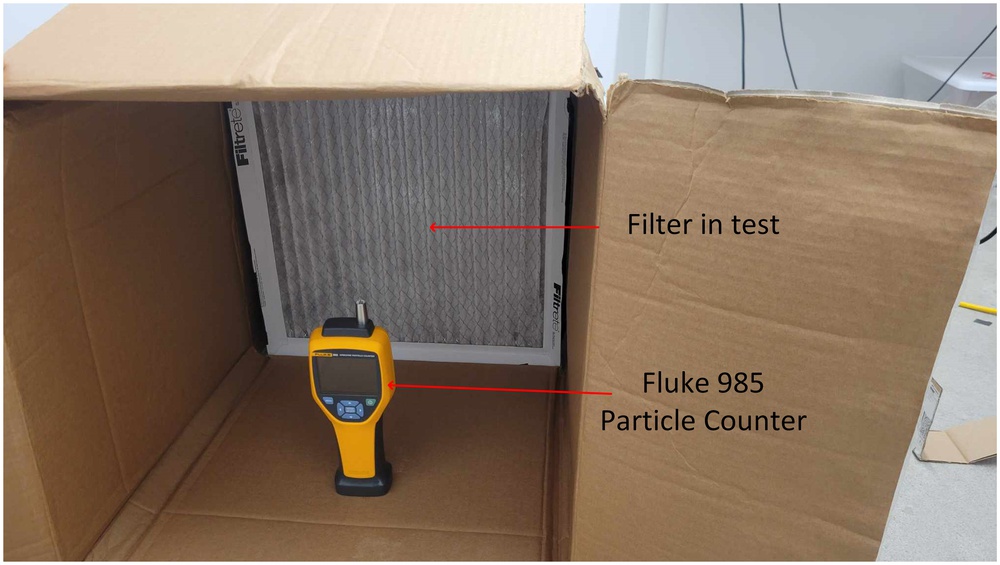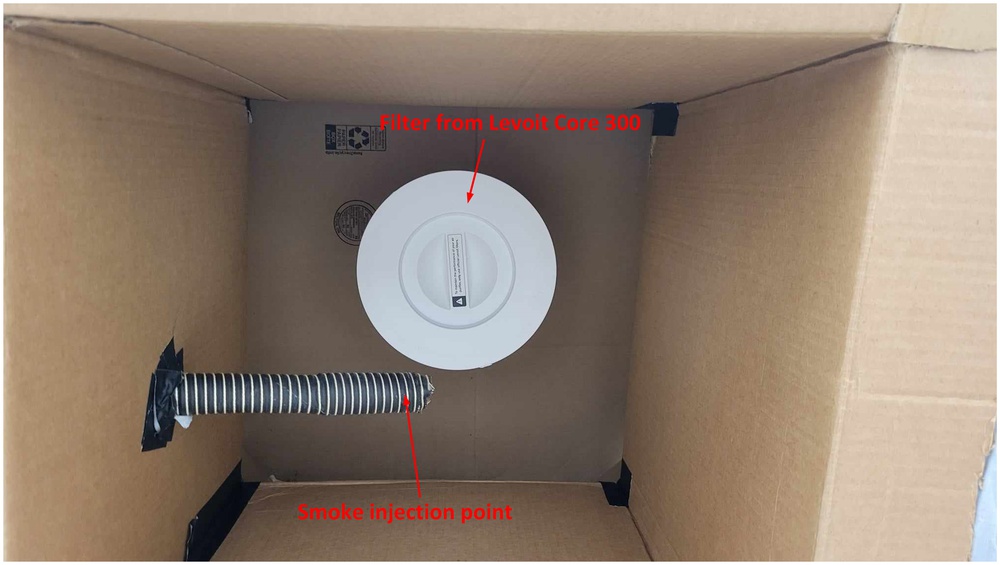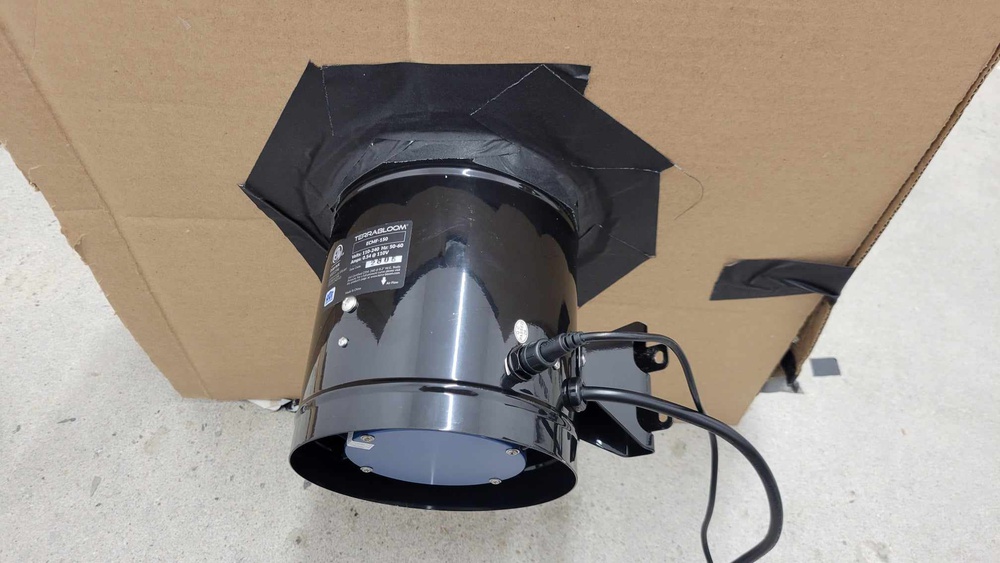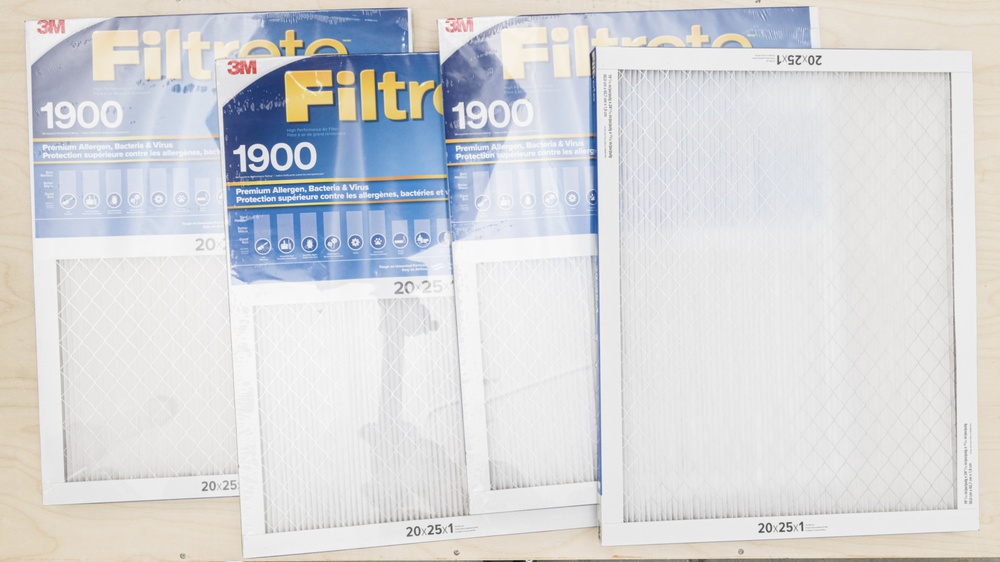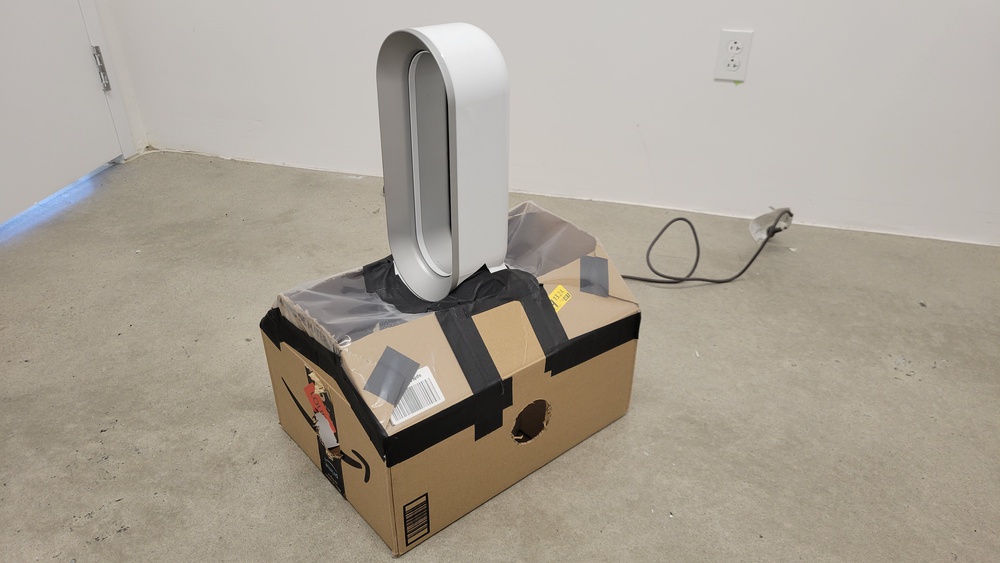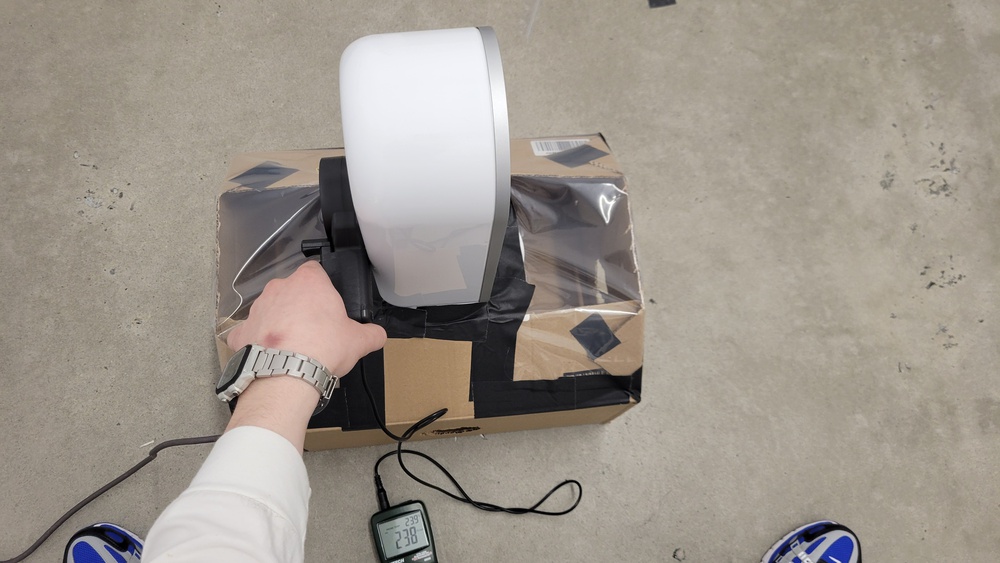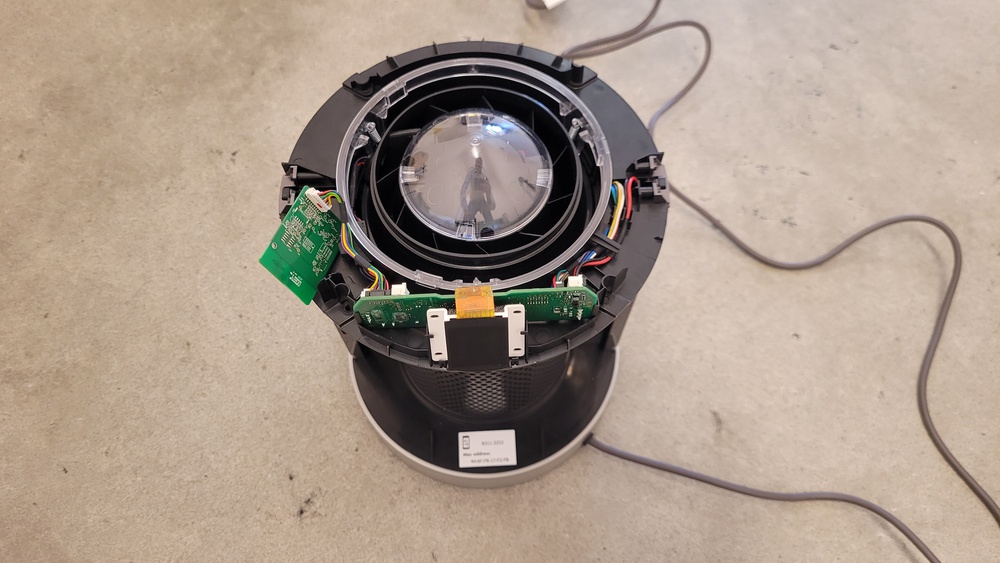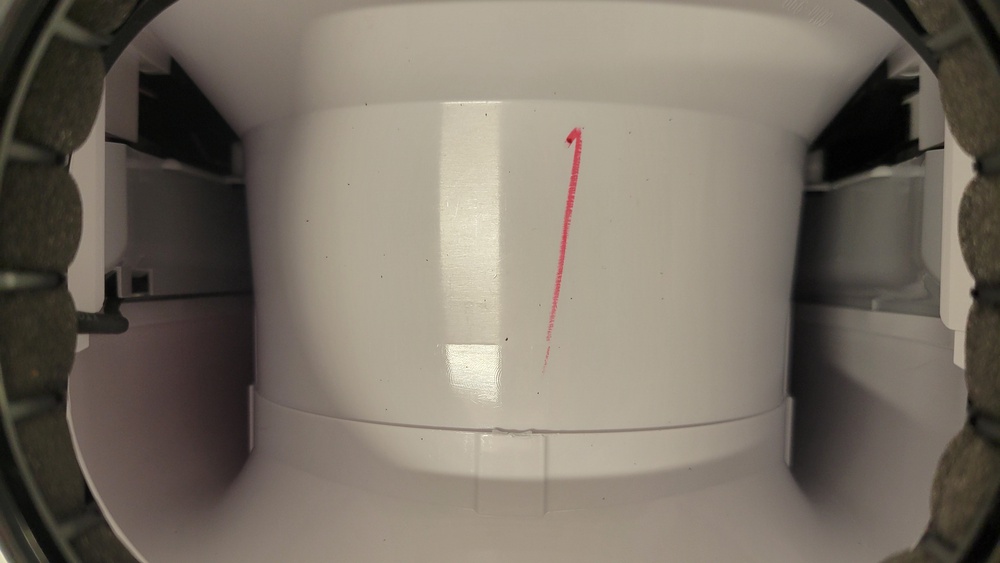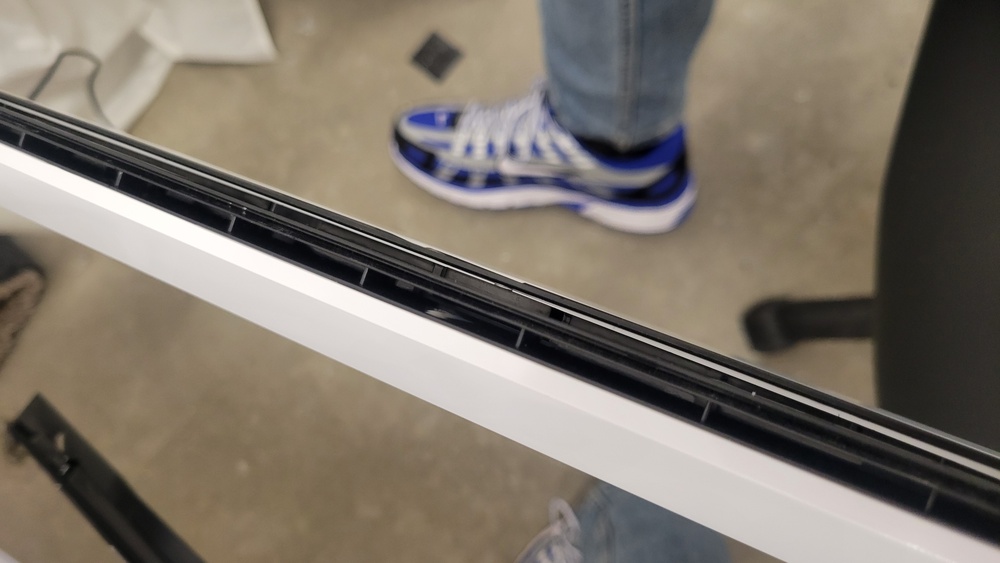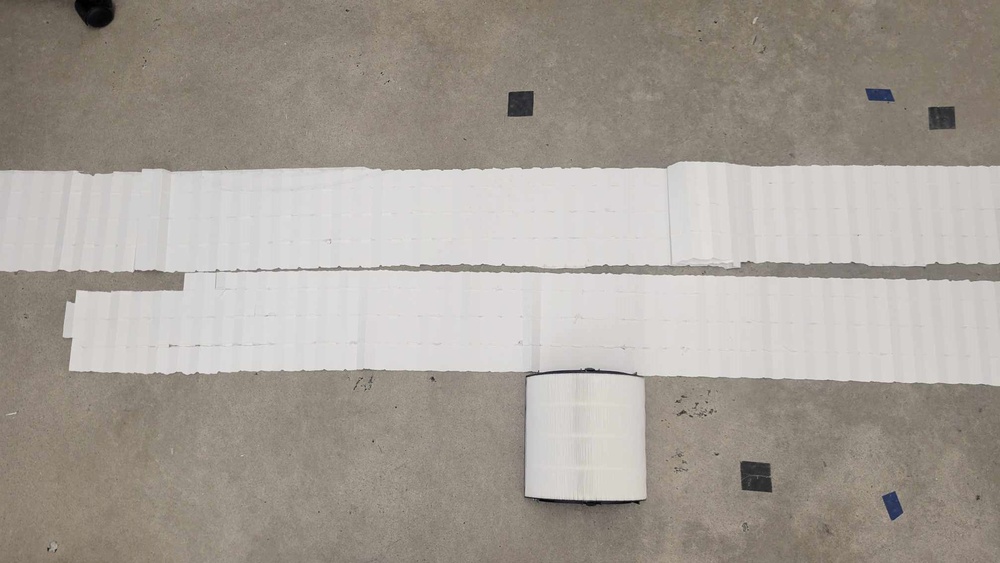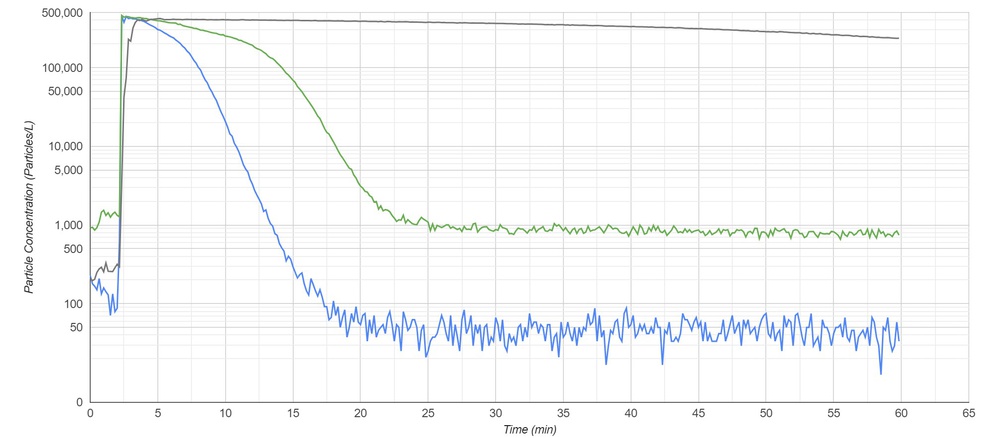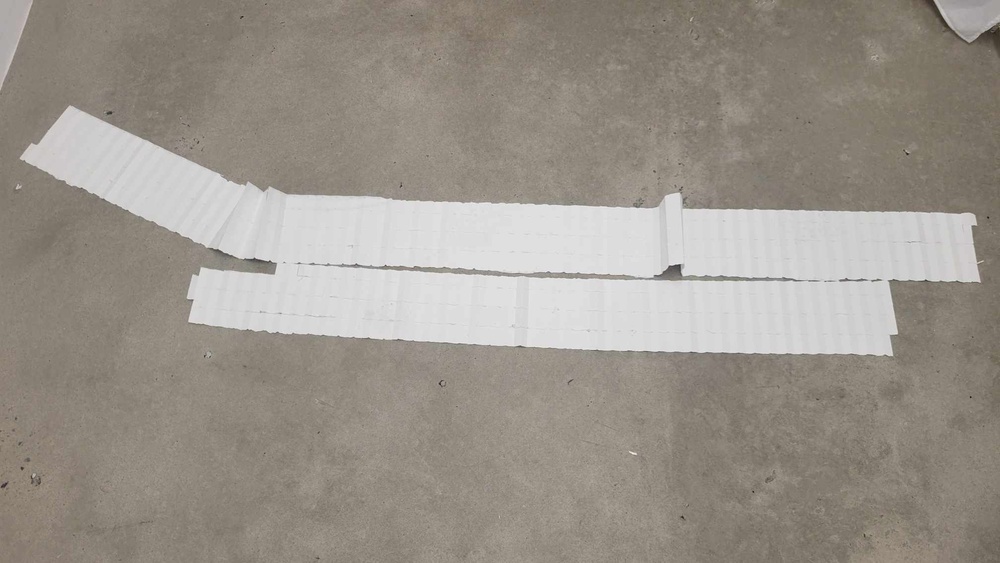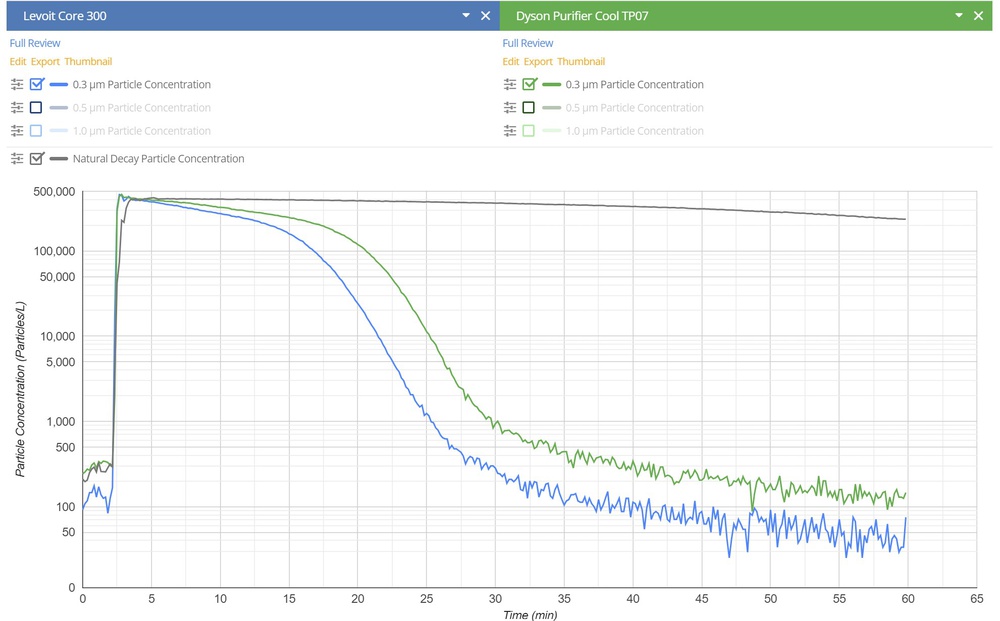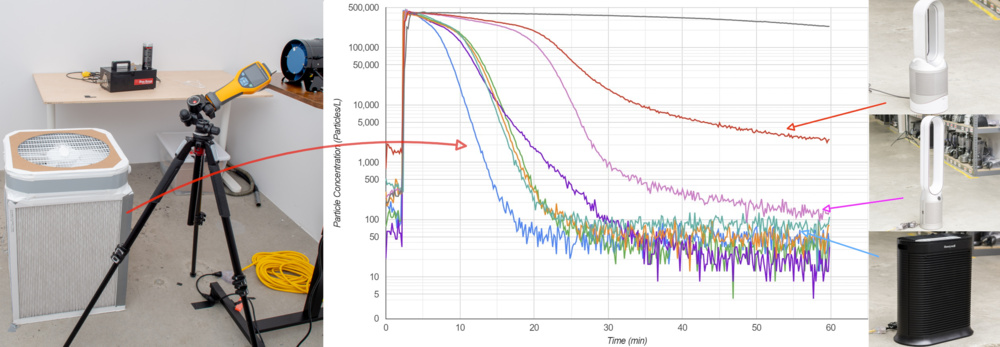
After testing over 20 consumer air purifiers, one thing became clear: the build-it-yourself Corsi-Rosenthal Box is the best for removing particles from the air. Richard Corsi and Jim Rosenthal, both engineers, designed this DIY air purifier during the COVID-19 pandemic. Their simple yet effective design involves building a "box" of furnace filters around a simple fan. We built our own Corsi-Rosenthal Box using this guide. This design is the best at particle filtration due to its high airflow, good filter quality, and large filter area, leading it to outperform all other consumer-grade models we've tested. Of course, if you want to see a broader breakdown of the product landscape, you can look at our recommendations for the best air purifiers.
Although the Corsi-Rosenthal Box is excellent at removing airborne particles, it also has downsides, being a DIY solution. The lack of an activated carbon filter makes it unsuitable for dealing with volatile organic compounds (VOCs). Also, the recommended box fan generates quite a bit of noise. Another drawback is the lack of quality-of-life features. For example, our unit has nothing other than a three-level fan speed adjustment dial. There's no Wi-Fi connectivity, sleep mode, timers, or auto mode. The last downside is that the box has an industrial look, with its duct tape and furnace filter sides, which isn't easy on the eyes.
Simulating Air Pollution To Test Safely And Objectively
Testing air purifiers can be challenging since they're designed to remove pollution from the air. To test them properly and safely, we needed a way of injecting some type of airborne particles inside the testing room. Injecting pollutants like cigarette smoke or smog would be dangerous, so we had to find a way to simulate poor air quality. We settled on using a smoke machine that produces particles that match most air pollutants in size; we then injected this smoke inside a testing room.
We perform a two-second smoke injection in the testing room while the air purifier is running at max speed to test performance. A FLUKE 985 particle counter is set up inside to measure ambient particle counts.
The test lasts 1 hour, taking 5-second air quality measurements every 5 seconds. This produces 360 data points, which we then use for our comparisons and graphs.
To simulate a real-life scenario better, we use a fan to circulate the air in the testing room like you would see in a typical room. With a controlled injection of smoke, we can simulate hazardous air quality in terms of PM2.5 particle quantities.
To score the air purifiers, we were inspired by what the National Research Council of Canada is doing. We generated a reference curve representing the baseline of how airborne particles would normally fall to the ground or adhere to the walls of a test chamber without any air purifier running. This natural 'room decay' curve is then compared to the reduction in particle quantities when an air purifier is running to obtain its filtration performance.
We don't test an air purifier's ability to trap VOCs in this initial iteration of our testing methodology. We don't view this as a priority because most air purifiers sold to the general public contain very limited quantities of activated carbon. According to this study, up to 1.1kg of activated carbon is necessary to maintain low VOC levels for 30 days in a normal environment. Many of the air purifiers that are sold don't contain anywhere near this amount and are likely to perform similarly badly in this theoretical test. For example, here we have the filters from a Coway Airmega 200M. The manufacturer's website says the carbon filter can capture odors and harmful VOCs.
However, this activated carbon filter only weighs 24 grams, including the weight of the mesh-type material that's impregnated in activated carbon. This quantity is nowhere near close to being enough to have a real impact on harmful VOCs. Another reason why we don't test for volatile organic compounds (VOCs) as of now is that most instruments that measure this type of pollutant don't give a detailed analysis of what exact gases are in the room. Before we can score something like VOCs, it's important for us to know exactly what we're measuring and scoring. Because some VOCs are more dangerous than others, scoring an air purifier's ability to trap them as an aggregate doesn't align with our company's value of transparency. In the meantime, if you're looking for an air purifier with enough activated carbon to impact VOCs, you should look for air purifiers that contain large quantities of activated carbon. A large quantity could be something like 5 to 20 lbs of activated carbon pellets.
Filter Quality Is An Important Part Of The Air Purifier
Filter quality also plays a large part in filtration performance. There are a lot of air purifiers on the market right now, but filter quality can vary pretty drastically between them. Filters can work in three main ways to remove particles, depending on the size of said particle. There's the diffusion mechanism, which works best for particles below 0.1 micrometer (um). The interception mechanism works best with particles bigger than 0.4um, and finally, inertial impaction works on larger particles.
The limitations of these mechanisms explain why the 0.3um particles are the hardest to capture. The particles are too big for the diffusion and too small for impaction or interception, so they fall between the two categories, as you can see here.
We wanted to check if we could notice the difference in performance for three filters of the same exterior dimensions but with different filtration ratings. We compared MPR 300 (MERV 5), MPR 1900 (MERV 13), and MPR 2500 (MERV 14) filters in our test rig to see the differences in performance when it comes to filtering small particulates.
Our test rig consists of two fans, one pushing and one pulling, a smoke injection point, and the particle counter.
We injected smoke in the front part of the rig, with the particle counter on the other side of the filter; only air that has passed through the filter reaches the particle counter. The results we gathered from this test align with our expectations. The MPR 300 filter was outperformed by the MPR 1900 filter, which in turn was outperformed by the MPR 2500 filter. Based on the same smoke injection time, the MPR 300 let through up to 52,567 particles compared to 45,981 for the MPR 1900. Meanwhile, the MPR 2500 let through only 37,876 particles. It's interesting to see the difference in particle filtration between these three, as the only difference lies in the type of filter media and their densities. These three filters were made by Filtrete and are of the same size.
To be more relatable to the market, we tested filters from a Levoit Core 300 and a filter from the Dyson Pure Hot+Cool Link HP02. We chose these two because the Levoit Core 300 scored well in our particle filtration test, especially for such a small device.
Meanwhile, the Dyson Pure Hot+Cool Link HP02 was chosen because it's the lowest-scoring air purifier on our list.
They also both have a similar footprint, so a significant difference in size isn’t a factor when comparing the two.
The filters are installed on an inline fan to replicate how they're used in the air purifiers. This setup mimics air being pulled in through the filter instead of pushed like the square filters. The Dyson Pure Hot+Cool Link HP02 fan is mounted in the same way.
Now, that said, the Levoit and Dyson filters aren't identical in size and differ in density, but the results from our filter quality test match our expectations and help explain the relative performance of each product. The filter from the Dyson HP02 is the worst one we've tested so far. The graph shows that the Levoit Core 300 curve is steeper, equating to faster particle filtration than the Dyson Pure Hot+Cool Link HP02.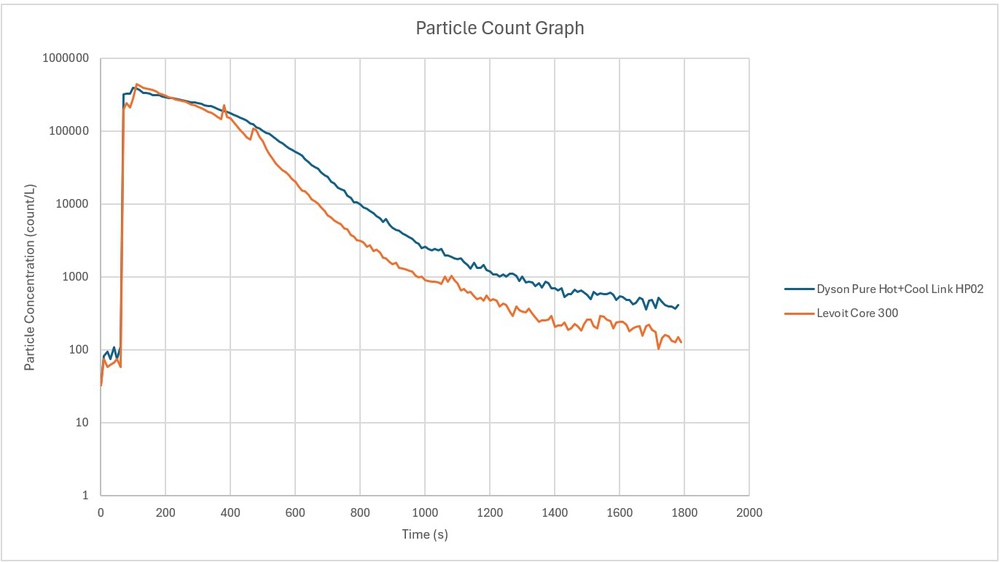
Knowing the impact of filter quality, we can return to the Corsi-Rosenthal box, which uses MPR 1900 (MERV 13) filters. These filters are of high quality and are designed to deal with smaller particles, which helps explain the DIY air purifier's high particle filtration score.
Many air purifier companies have proprietary filters that aren't always tested by a third party. Using MPR or MERV-rated filters from a reputable source is a good way to know the quality of the filters used in an air purifier. These filters are mostly for house air treatment and follow regulations for their efficacity.
Higher Effective Airflow Leads To Better Performance
The Dyson air purifiers, with the now well-recognized bladeless design, have high perceived airflow but score the lowest among air purifiers in terms of actual particle filtration. This contradicts our assumption that high airflow leads to high filtration performance, so we went further to try and understand exactly why.
Looking at the different air purifiers tested, we decided to investigate the Dyson Pure Hot+Cool Link HP02. We measured the airflow that was sucked in by placing the air purifiers in a sealed box and measuring all the air that was coming in.
We measured an average input airflow of 66 Cubic Feet per Minute (CFMs). After measuring such a low value compared to what we perceived by putting our hand in front of a fan, we measured the average output airflow. We had a value of 326 CFM at 6 inches from the front of the fan. This is almost five times the input airflow, and it can explain why the air purifier's performance doesn't match its perceived airflow. This illustrates that you need high input airflow to suck the particles into the filter. Higher input airflow will also make it easier for the machine to bring in particles that are further away.
After seeing this difference between input and output airflow, we wanted to measure behind the fan to see how much air was being pulled in by the fan. We measured an airspeed of 126 CFM.
These numbers show that only a small portion of the output airflow is actually passing through the filter.
To better understand why there was such a big difference between input and output airflow, we pushed our investigations further into the bladeless design by disassembling a Dyson Purifier Cool TP07. We saw what we were expecting: an outlet that was getting smaller and smaller to accelerate the air coming out. The air purifier works by having a small inline fan that pushes air in the bottom of the oval-shaped section.
The air has no other way to go except going up into the oval, where it's forced outside by small outlets.
These outlets on the side are tiny compared to the generally oval shape of the air purifier outlet, and they're not going all around the oval structure like you would assume while looking at it. On the TP07, we can also see an airfoil shape. This airfoil shape uses the lower pressure created in front of the fan to draw more air in from behind.
This makes the output airflow higher than what's being filtered. Having an output airflow that's higher than the filtered airflow causes the bladeless Dysons to struggle in our air purification test. Dyson claims to accelerate the airflow ten times for the TP07, but their claim can be misleading since the accelerated airflow doesn't fully consist of purified air.
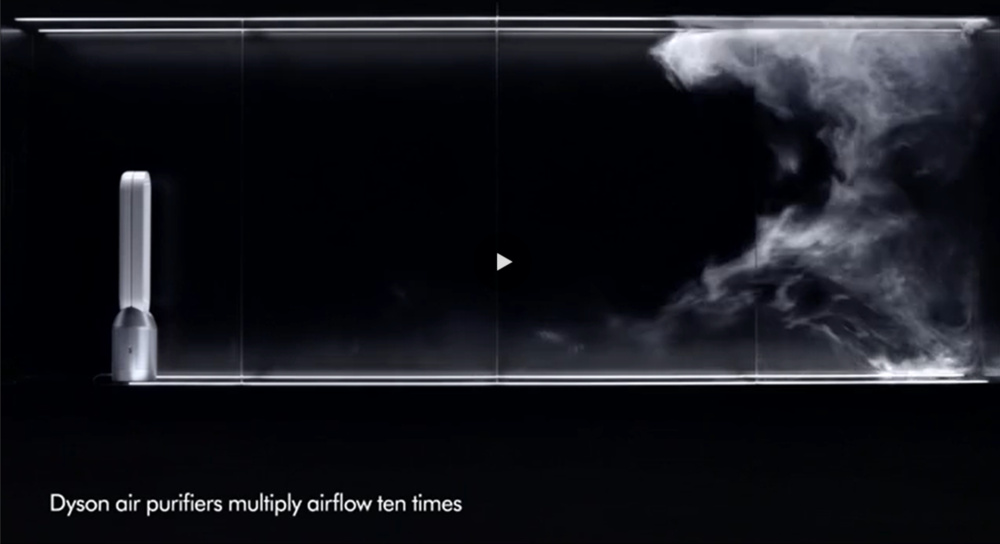 Screenshot of a video on Dyson's website showing the airflow generated by the Dyson Purifier Cool TP07.
Screenshot of a video on Dyson's website showing the airflow generated by the Dyson Purifier Cool TP07.The investigations into the Dyson Pure Hot+Cool Link HP02 and the Dyson Purifier Cool TP07 show us how important effective airflow is. People expect the bladeless Dysons to be good since they can generate high-output airflow. The problem with bladeless Dyson air purifiers is that not much air actually passes through the filter system. Another hypothesis about why it struggles can be linked to the high output airflow pushing the particles further into the room. The input airflow is too weak to pull in the particles before they're pushed away from the filter. This investigation sheds light on the fact that the bladeless Dysons were optimized for air displacement and not for optimal particle filtration, similar to a normal pedestal fan.
Compared to the Dyson Pure TP07, the Corsi-Rosenthal Box is one of the air purifiers that generate the most efficient airflow due to its big fan that can only pull in air through its filters. The Corsi-Rosenthal Box delivers high CFM compared to most consumer products.
High Filter Frontal Area Is A Key Part Of Air Purification
The filter frontal area is the last of the three key factors in an air purifier. This is the total surface of the filters that are perpendicular to the airflow. A filter's total surface can be much more than its frontal area if we account for pleats.
A larger frontal area doesn’t always mean a higher total surface. To compensate for the factor of differing filter pleat densities, we compared the Corsi-Rosenthal Box with 4 MPR 1900 filters against a fan with only one MPR 1900 filter. The box has four times more area than the single filter. The box with four filters performs way better than the single filter, which is expected. In the graph below, the green line shows 0.3um particle filtration performance for the fan with one filter, while the blue line shows the same variable for the box fan with four filters. The Corsi-Rosenthal Box with four filters has an air cleaning rate of 791m^3/hour, compared to the single filter unit with an air cleaning rate of 451 m^3/hour.
Comparing consumer air purifiers based on filter area can be hard to achieve because the filter's total area depends on its density. We can see this trend in other air purifiers, but since they have different airflow and different shapes, it can be harder to know the impact of filter size on performance. The worst air purifier we've tested so far is the Dyson Pure Hot+Cool Link HP02. It has one of the smallest filter frontal areas of all the air purifiers measured. This is one of the reasons why it's so bad.
We unfolded different filters from consumer products and furnace filters to show the difference that filter density can make. The Dyson Purifier Cool TP07 filter has a frontal surface of 1.278 ft^2, and the unfolded filter area is 8.50 ft^2. This air purifier has an air cleaning rate of 377 m^3/hour.
The Dyson Purifier Cool TP07 appears to be a paper filter. The Levoit 300, which has an air cleaning rate of 482 m^3/hour, has a filter frontal area of 0.87 ft^2 that goes up to 11.5 ft^2 once unfolded.
The Levoit Core 300 has a larger unfolded filter area than the TP07, which can help explain the performance differences between them, as shown in this graph.
A higher filter area is better for the air purifier because more airflow passes through the filter, as we saw with the Corsi-Rosenthal Box, which had four times the number of filters compared to the single-filter box.
Conclusion
After all these investigations, we can say that filter area, filter quality, and effective airflow should all be prioritized for good particle filtration. That said, optimizing for each factor can be hard for consumer-oriented products. An air purifier with high efficient airflow will be noisier than others that aren't generating as much airflow, but it'll generally be able to purify more air. Bigger filters also require more space. We can see with the Dyson Pure Hot+Cool HP02 that a smaller filter will have a smaller form factor but will lead to lower particle filtration performance. This is taken to the extreme with the Corsi-Rosenthal Box, which has high filter area but also takes up a lot of room.
Finally, filter quality is also important since a higher-quality filter will be more effective in trapping smaller particles than a lower-quality filter. Some manufacturers might choose lower-quality filters to reduce the cost of their products. To summarize, the Corsi-Rosenthal Box was optimized for all three of these factors, and that's reflected in its unparalleled particle filtration performance. However, this comes at the cost of high noise, a bulky footprint, and an ugly overall aesthetic.
